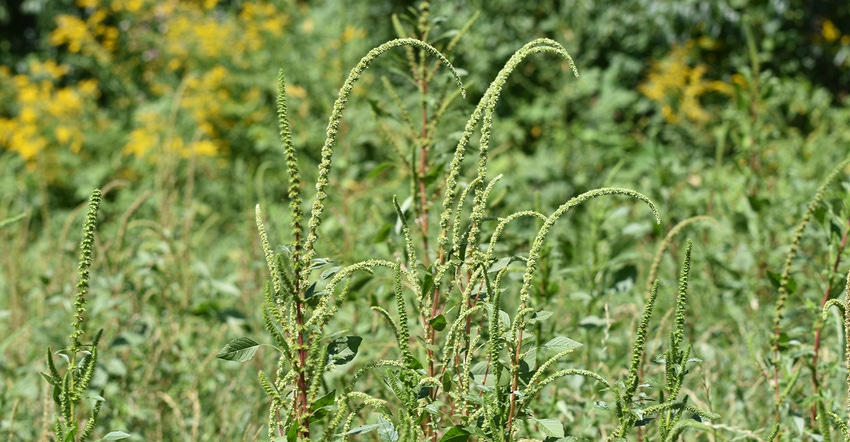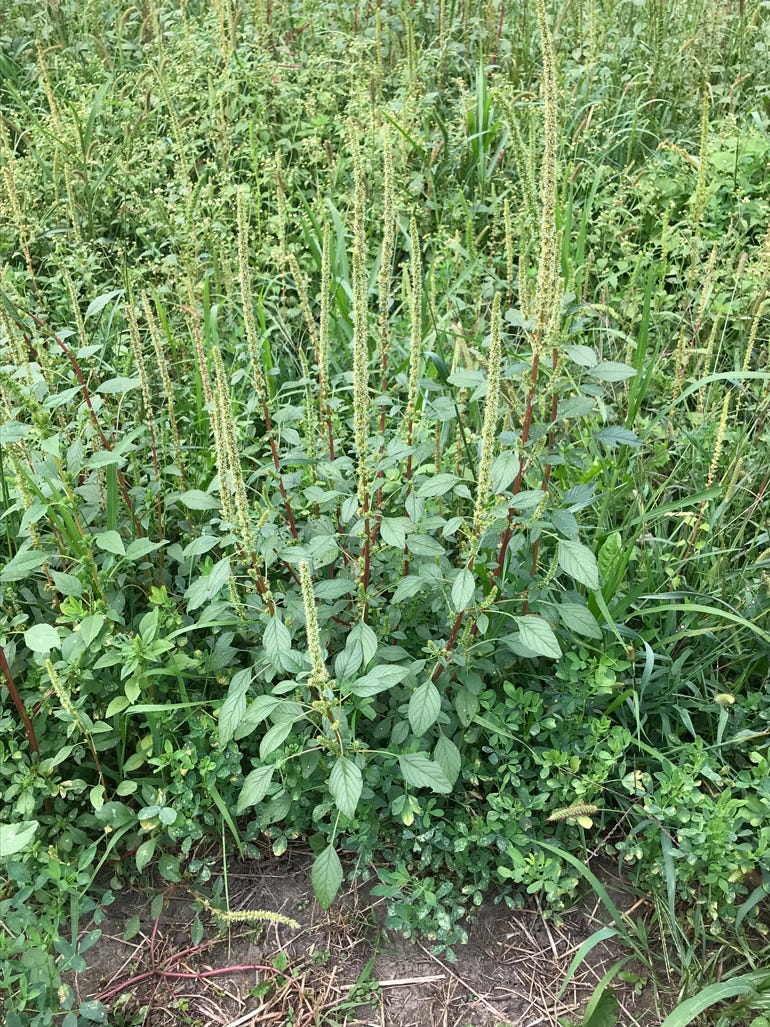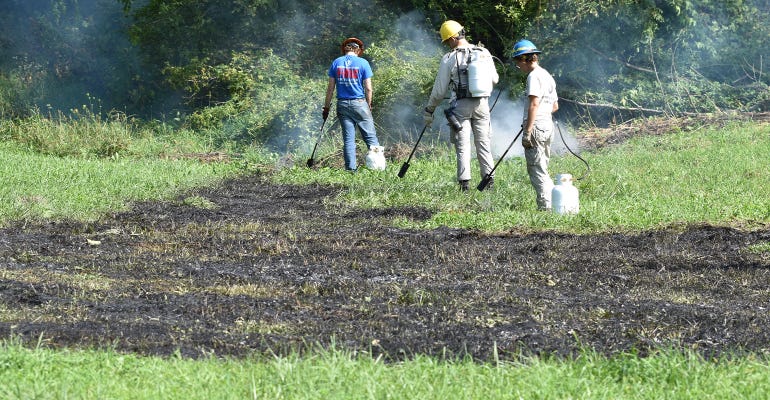
Houston, we have a problem.
The Minnesota Department of Agriculture announced last week that officials positively identified the invasive weed Palmer amaranth in Houston County.
This is the first confirmed Palmer infestation in that county.
 HOUSTON, WE HAVE A PROBLEM: Palmer amaranth was found flowering in a small hay field in Houston County. Palmer amaranth has long flowering spikes that are spiny. The plant can produce hundreds of thousands of seeds in a short time frame. Seeds mature within 10-12 days after pollination. Note how the leafstalk is longer than the leaf blade on lower leaves.
HOUSTON, WE HAVE A PROBLEM: Palmer amaranth was found flowering in a small hay field in Houston County. Palmer amaranth has long flowering spikes that are spiny. The plant can produce hundreds of thousands of seeds in a short time frame. Seeds mature within 10-12 days after pollination. Note how the leafstalk is longer than the leaf blade on lower leaves.

The MDA was contacted by the Houston County ag inspector after discovering several hundred plants. The infestation was located on a narrow strip that had been planted with a forage mixture in the spring of 2019 between a hay field and forest, according to Allen Sommerfeld, MDA senior communications officer. The field was cut in early July. Since then, the field has since been mowed and burned off to destroy any plants, seedlings and seeds produced this season. At one time, the farm had dairy cattle. There are no livestock on the farm.
The MDA Palmer amaranth team will monitor the site for up to three years for any new plants.
The source of the infestation is still under investigation.
Denise Thiede, MDA seed unit supervisor, says the team is working to determine how Palmer amaranth got into the field. She asks that farmers scout for the weed now before harvest.
“The plants will be identifiable with flowering and fruiting structures,” Thiede says. “Seedhead spikes can get up to 3 feet long and are pricklier than waterhemp or other pigweed spikes.”
Palmer amaranth is listed as a noxious weed in Minnesota. All above and belowground parts of the plant must be destroyed. It cannot be moved. The weed is also listed as a prohibited weed seed in Minnesota as well as in Iowa, North Dakota, South Dakota and Wisconsin. This means no Palmer amaranth is allowed in any seed offered for sale in the state.
MDA said that a zero-tolerance approach to this weed is essential to protect agriculture in the state.
 KILLING PALMER: Conservation Corps Minnesota staff torched the area infested with Palmer amaranth in Houston County. MDA officials said that flame torching is an effective management strategy to kill Palmer amaranth plants, seedlings and seeds on the soil surface.
KILLING PALMER: Conservation Corps Minnesota staff torched the area infested with Palmer amaranth in Houston County. MDA officials said that flame torching is an effective management strategy to kill Palmer amaranth plants, seedlings and seeds on the soil surface.

Since it was first discovered in the state in 2016, Palmer amaranth has been found in eight Minnesota counties, including Houston. It was discovered in conservation plantings in Lyon and Yellow Medicine counties in 2016, and Todd and Douglas counties in 2017. MDA confirmed the weed in row crop fields in Redwood and Jackson counties in 2018. Palmer amaranth has been eradicated from all those sites.
The weed was also found in a proso millet field in Lincoln County in August 2019.
The Lincoln and Houston sites will be monitored to determine if further management is needed to eradicate these newly introduced populations.
If you suspect Palmer amaranth on your property, collect the whole plant and contain any seed produced. Contact MDA’s Arrest the Pest line at 1-888-545-6684 or [email protected], the University of Minnesota Extension or your local crop consultant.
For more information on Palmer, visit the MDA website.
You can also view locations of Palmer findings online as well.
About the Author(s)
You May Also Like






